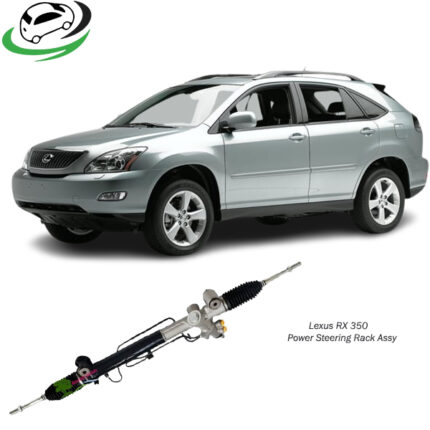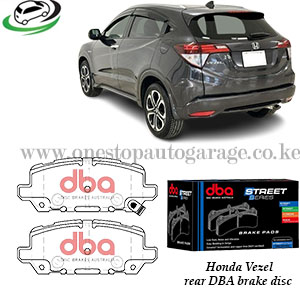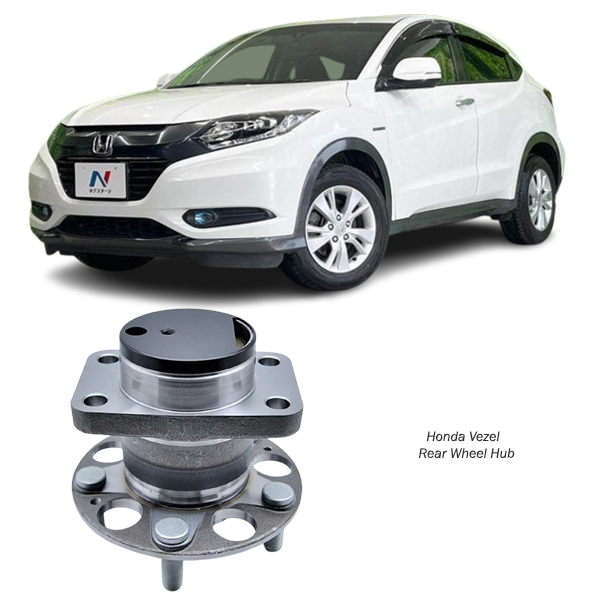-6%
Get Honda Vezel Rear wheel hub 42200-T7A-J52 in Kenya
The rear wheel hub is a crucial component of a vehicle’s suspension and drivetrain system. It serves as the mounting point for the wheel and is vital for ensuring smooth rotation, stability, and proper alignment of the wheel assembly. This guide delves into the functions, design, maintenance, and replacement considerations of the rear wheel hub.
What is a Rear Wheel Hub?
The rear wheel hub is a robust metal assembly located between the wheel and the suspension components. It acts as the connection point where the wheel attaches to the vehicle, facilitating rotation and stability while supporting the vehicle’s weight.
Key Components of a Rear Wheel Hub:
- Hub Body: The core structure that supports the wheel and connects to the axle.
- Wheel Studs: Protruding threaded rods that hold the wheel in place with lug nuts.
- Wheel Bearings: Encased within the hub to allow smooth and low-friction rotation of the wheel.
- ABS Sensor (if equipped): Part of the hub assembly in modern vehicles, contributing to the anti-lock braking system.
Functions of the Rear Wheel Hub
- Facilitating Wheel Rotation:
The hub assembly houses the bearings that allow the wheel to rotate freely and with minimal friction. - Supporting Vehicle Weight:
Rear wheel hubs bear a significant portion of the vehicle’s weight, especially in rear-wheel-drive or all-wheel-drive systems. - Maintaining Wheel Alignment:
By holding the wheel securely in place, the hub ensures proper alignment, which is critical for safe handling and even tire wear. - Transmitting Power (in Driven Wheels):
In vehicles with rear-wheel or all-wheel drive, the hub transmits torque from the axle to the wheel. - Integrating Safety Features:
Many modern hubs include ABS sensors that monitor wheel speed, contributing to effective braking and traction control systems.
Types of Rear Wheel Hubs
- Non-Driven Wheel Hubs:
Found in vehicles where the rear wheels do not receive power. These hubs focus primarily on providing rotation and stability. - Driven Wheel Hubs:
Found in rear-wheel-drive and all-wheel-drive vehicles. These hubs transmit torque from the axle to the wheels and often include additional components like splines or flanges. - Integrated Wheel Hub Assemblies:
Modern vehicles often use sealed hub assemblies that include pre-installed bearings and ABS sensors, reducing the need for separate components.
Signs of a Worn or Failing Rear Wheel Hub
- Unusual Noises:
A failing hub can produce grinding, humming, or rumbling noises, often caused by damaged or worn-out bearings. - Vibration or Shaking:
A faulty hub may lead to vibrations felt through the steering wheel or body, particularly at higher speeds. - ABS Warning Light:
If the ABS sensor in the hub is damaged, the ABS warning light may illuminate on the dashboard. - Wheel Play:
Excessive looseness or movement in the wheel when jostled by hand indicates a worn hub or bearing. - Uneven Tire Wear:
Misalignment caused by a faulty hub can result in irregular tire wear patterns. - Reduced Braking Performance:
In some cases, a damaged hub can impact braking efficiency, particularly if it affects the ABS system.
Benefits of a Well-Maintained Rear Wheel Hub
- Smooth Driving Experience:
A properly functioning hub ensures the wheel rotates smoothly, contributing to a quiet and comfortable ride. - Enhanced Safety:
Reliable hubs maintain wheel alignment and support braking systems, reducing the risk of accidents. - Extended Tire Life:
Proper wheel alignment and stability help prevent uneven tire wear, saving on replacement costs. - Optimal Fuel Efficiency:
Minimizing friction in the wheel assembly reduces the energy required for movement, improving fuel economy.
Maintenance Tips for Rear Wheel Hubs
- Regular Inspections:
Periodically check the hub for signs of wear, damage, or looseness. Include it in routine brake and suspension checks. - Monitor Bearings:
Listen for unusual noises that may indicate worn bearings, as they are integral to the hub assembly. - Protect from Contaminants:
Ensure the hub assembly is sealed properly to prevent dirt, water, and debris from damaging the bearings or internal components. - Inspect ABS Components:
If your vehicle has ABS, regularly check the sensor and wiring for damage or corrosion. - Torque Lug Nuts Properly:
Over-tightened or under-tightened lug nuts can stress the hub and lead to premature failure. - Replace When Necessary:
Adhere to the manufacturer’s recommendations for hub and bearing replacement intervals, particularly if you frequently drive in harsh conditions.
Replacing a Rear Wheel Hub
When to Replace:
- Significant noise or vibration persists.
- ABS issues or wheel play are detected.
- Bearings or seals are worn beyond repair.
Tools Required:
- Wrenches and sockets.
- Torque wrench.
- Bearing puller (if applicable).
- Hub assembly (replacement part).
Steps to Replace:
- Lift and Secure the Vehicle:
Use a jack and jack stands to elevate the rear of the vehicle safely. - Remove the Wheel:
Loosen the lug nuts and remove the wheel to access the hub assembly. - Detach the Brake Assembly:
Remove the brake caliper and rotor to expose the hub. - Disconnect ABS Components (if equipped):
Carefully disconnect the ABS sensor to avoid damage. - Remove the Old Hub:
Unbolt the hub assembly from the suspension or axle. A puller may be necessary for stubborn hubs. - Install the New Hub:
Align and secure the replacement hub with the proper torque specifications. - Reassemble Components:
Reattach the brake assembly, reconnect the ABS sensor, and mount the wheel. - Test the Vehicle:
After lowering the vehicle, test drive to ensure proper installation and performance.
Consequences of Neglecting Rear Wheel Hub Maintenance
- Compromised Safety:
A damaged hub can lead to wheel instability or detachment, posing a serious safety risk. - Reduced Performance:
Worn hubs can affect handling, braking, and fuel efficiency, diminishing the driving experience. - Increased Repair Costs:
Ignoring early signs of hub failure may lead to collateral damage to surrounding components, such as brakes or suspension. - Risk of Breakdown:
A catastrophic hub failure can render the vehicle immobile, requiring immediate repair or towing.
Conclusion
The rear wheel hub is a critical component for maintaining vehicle safety, stability, and performance. Regular inspections, timely replacements, and proper maintenance ensure that this essential part functions optimally. Whether it’s ensuring smooth wheel rotation, supporting vehicle weight, or integrating with modern safety systems like ABS, the rear wheel hub plays a pivotal role in the driving experience. By understanding its functions and taking proactive measures, you can extend the life of your vehicle and enjoy a safer, smoother ride.
Follow us on Facebook for more parts.



